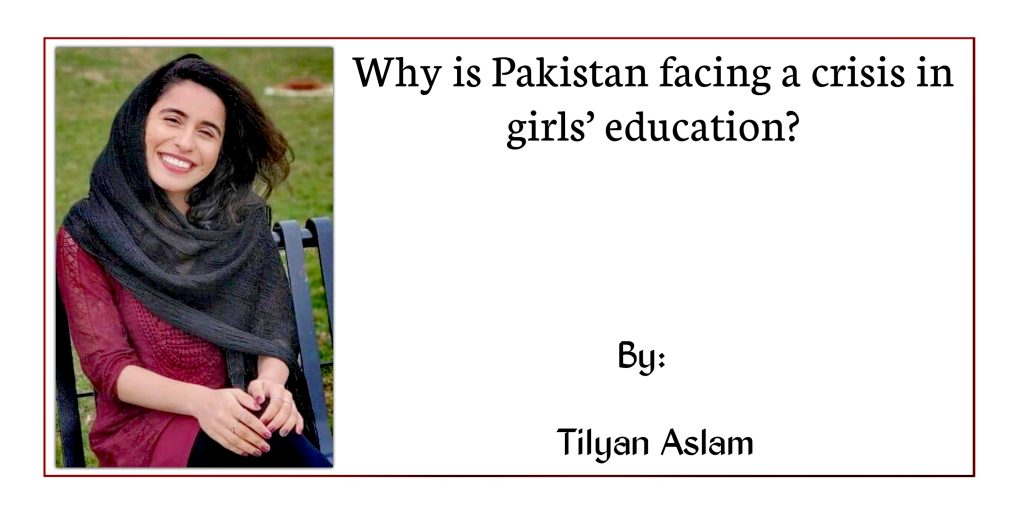“If you are planning for a year, sow rice; of you are planning for a decade, plant trees; if you are planning for a lifetime, educate people.” – Chinese Proverb
Education is the pressing need in today’s world. Education is what empowers individuals and uplifts communities and economies. It is equally crucial for everyone across the world regardless of the color, caste, creed and gender. But it is very unfortunate to know that countries like Pakistan are facing a dire crisis in girls’ education even in the 21st century. Almost 70% of girls are set up as the victim of marital concerns instead of proper higher education.
Pakistan was described as “among the world’s worst performing countries in education”, at the 2015 Oslo Summit on Education and Development. An estimated number of 22.5 million children are out of school. Girls are the most affected in particular.
There are high numbers of out-of-school children, and significant gender disparities in education, across the country, but some areas are more likely affected.
In Balochistan, the province with the least number of educated women, 81% of women had not completed their primary school compared to 52% of men. Political instability, subduing of civil society and other escalating ethnic and religious tensions poison the current social landscape of Pakistan. These forces divert the attention of government towards the basic and essential services like education and very unluckily girls lose out the most.
There are various factors why Pakistan is in a crisis in terms of women education. Each factor is interlinked with one another.
Poverty is one of the founding barrier to sending children to school. Families with low income or nearly no income cannot afford the expenses of education. Many children, including girls, are out of school because they are working to support their families.
Some families still don’t believe that girls should be educated or girls should to stop going to school after a certain age due to the social norms and restrictions. In many areas of the country, families or girls who violate these cultural norms may face the aftermaths of it. The dated traditions of the country and the patriarchal authority greatly affect the women.
Child marriage is both a consequence and a cause of girls not attending school. Marriage is considered as the only and ultimate goal for a girl in Pakistan. A majority of girls are forcibly asked to discontinue attaining education and sent off in marriage proposals to older men in the age. The lack of laws is leading to a scary rise in early child marriages.
Lack of hygienic health facilities is also a challenge for girls in many parts of the country. Absence of boundary walls and washrooms are big barriers to girls’ education.
Furthermore, other than the barriers outside the school system, there are several obstacles within the school system that girls face in the country.
One of the very factors that prohibits girls’ education is insecurity, including sexual harassments, crime, kidnapping and other conflicts. Some families find insecurity in their cities and communities one of the very reasons to not send children – mostly girls to school.
Transport is yet another hurdle to limit girls’ education in Pakistan. In rural areas, schools are far away and transport links are not available to ensure girls can attend school and that is why parents are hesitant to send their daughters to school.
In terms of educational standards, Pakistan is one of the lowest performing countries in South Asia. In 2017, it was ranked “the second worst country in the world in regards to gender equality.”
The gender inequality has made it extremely difficult for women to obtain education in Pakistan.
Despite all the progress and efforts made over the last two decades or so, there is still so much to do.
The current government, the authorities and educated individuals of the society should work together to eradicate illiteracy across the country and take pragmatic measures to ensure education for every sole in the country.


